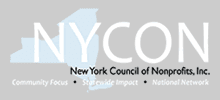| ||||||||||||||||||||||||||||||
(Utica, NY – June 2013) A new study highlighting Utica as welcoming to immigrants and refugees will be used to help other communities around the world build tolerant, welcoming neighborhoods. The study, commissioned by The Mohawk Valley Resource Center for Refugees (MVRCR) with financial support from The Community Foundation of Herkimer & Oneida Counties, Inc., and in partnership with Zogby Analytics examined the attributes Utica has that make it so welcoming to immigrants and refugees. The findings now will allow the refugee center the opportunity to provide consulting for communities around the world seeking to build tolerant areas.
Among the findings:
- Polled Uticans are proud of their city’s tradition of welcoming immigrants and cite that more than century-long history of welcoming southern and eastern Europeans, Middle Easterners, and western Europeans to the community.
- Sixty-nine percent of Utica area residents said immigration was good for the area, including 70 percent of those 65 and older and 69 percent of residents who have lived here more than 10 years.
- Seventy-four percent of residents in Greater Utica and eighty percent of residents in the city of Utica wanted the immigrant population to either grow or stay the same.
- The study sites a sophisticated network of helping agencies, public/private cooperation, affordable housing, disorganized/ isolated opposition, vision and leadership from the education community, immigrant reputation and will to assimilate, support from a variety of places of worship, and the Mohawk Valley Resource Center for Refugees as factors making Utica a welcoming community.
“The Greater Utica community enjoys its reputation for welcoming new people, feels that the city and its leaders are doing a good job, and believe that immigration offers the city new hope for the future and a fresh image to the rest of the world,” the report states. “Residents also appear to be very proud of themselves: the story of America has always been from the outset underscoring the values of ‘opportunity’ and a ‘second chance.’ Uticans seem to have internalized the sense that this community is responding in the best of both traditions.”
Click here: Final Report Available at www.zogbyanalytics.com
The Zogby Analytics study contains several key recommendations including:
- Immigration 2.0 (After the first 6 months)
- Leadership Training
- Collaborative Task Force (MVRCR led network tightening)
- Employers Network
- Entrepreneurship Development
- Microloans
- Neutralizing Urban Legends – Multimedia Public and Community Relations
- Video – being produced by Michael Patrei, Director of the Ilion Film Company
- Speakers Bureau
- Social Media
- Communications Community Relations Director
- Conference of Mayors
Another important result of the study is the development of an effective exporting assessment tool to enable MVRCR and Zogby Analytics to assess communities around world and help them become more welcoming. The Exporting Assessment Tool will include such tools as: community leaders interviews, community surveys, compilation and analysis of relevant data, community leaders focus groups.
“Investing in this important study was natural for The Foundation as we continue to seek partners who are choosing projects that have potential long-term impact on our great community,” said Peggy O’Shea, president and CEO of The Community Foundation.
Utica has been a city of immigrants – German, Welsh, Irish, Italian, Lebanese, Polish, Jewish, African-American, Bosnian and Burmese to name a few. Over the past 30 years, the work of the Mohawk Valley Resource Center for Refugees in welcoming refugees has been a source of pride for many in the community as well as garnering national and international recognition. The United Nations High Commission for Refugees has titled Utica of all the cities around the world as the “The Town that Loves Refugees”.
“We wanted to transform the anecdotal story of Utica’s success into a blueprint for positive change,” MVRCR Executive Director Shelly Callahan said. “The more we know about the characteristics that define a welcoming community, the better we can promote integration of recent arrivals and a cohesive community for everyone. As a successful model of integration, Utica and MVRCR are uniquely positioned to become leaders in successful community integration and cultural competency. We look forward to working with communities in America and around the world to help them to create more welcoming communities. We are grateful to the Community Foundation for their community leadership making this Immigrant Integration Indicators Project possible and the superb work by Zogby Analytics and John Zogby.”
“Both general public and leading stakeholders have not only internalized the value of bringing new people to the community, but have provided a clear path toward maximizing their potential,” Zogby Analytics Senior Analyst John Zogby said. Zogby Analytics is the successor to Zogby International. Zogby Companies have been respected nationally and internationally for their opinion research capabilities since 1984.
One of the challenges facing Utica in the study was leadership training to prepare the next generation.
Via the Madison County Courier (link)







 FROM IDEALWARE
FROM IDEALWARE


















